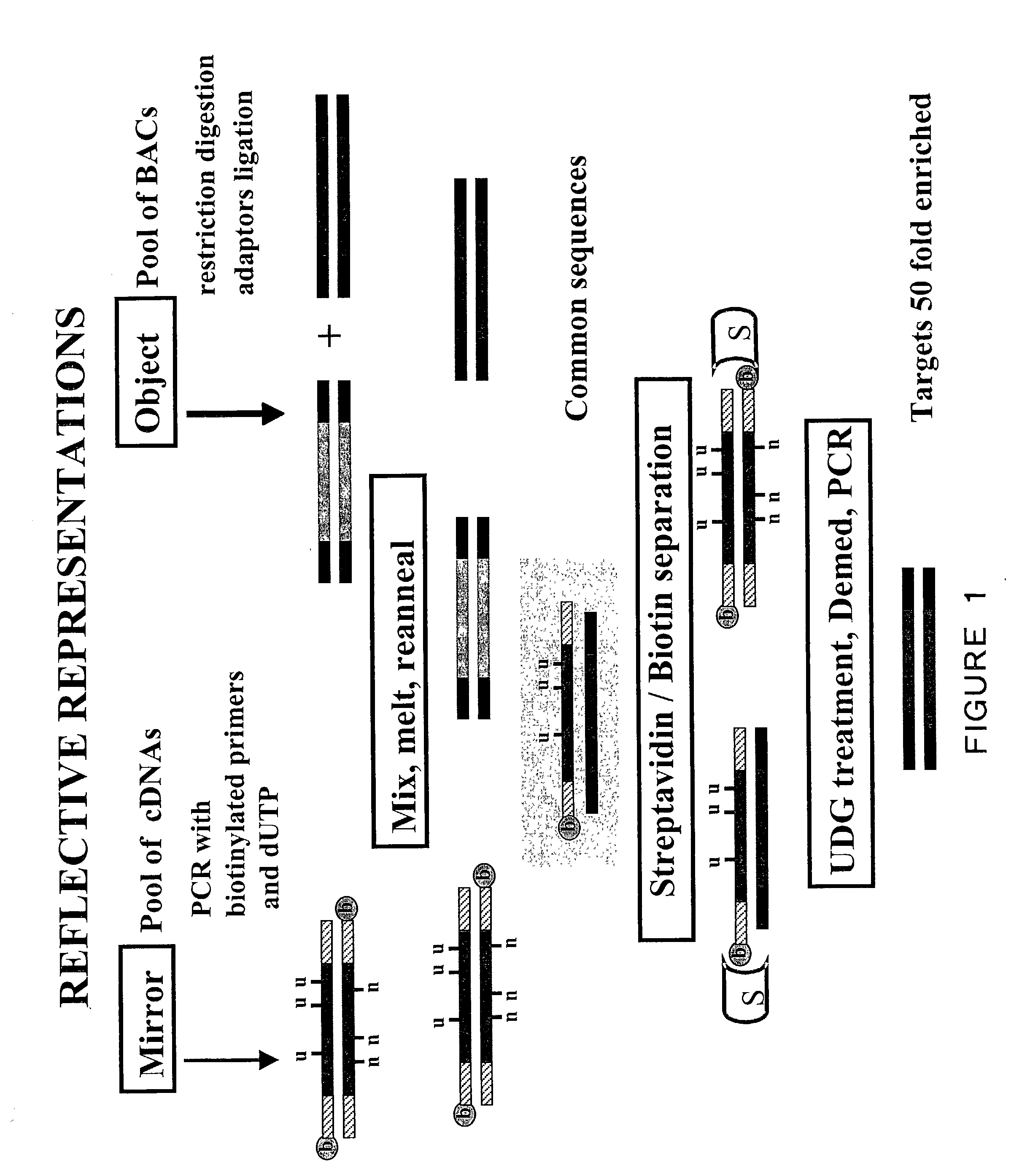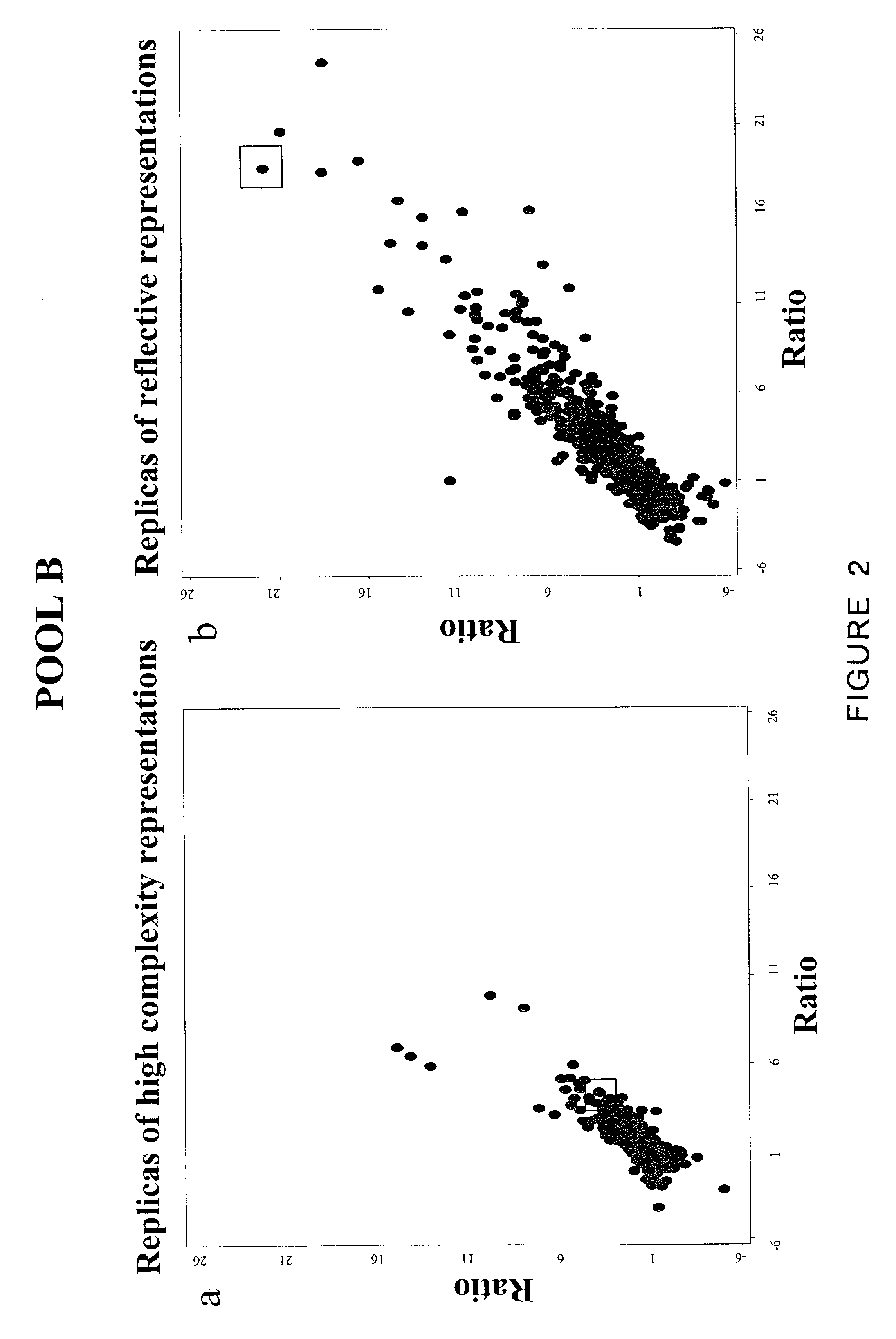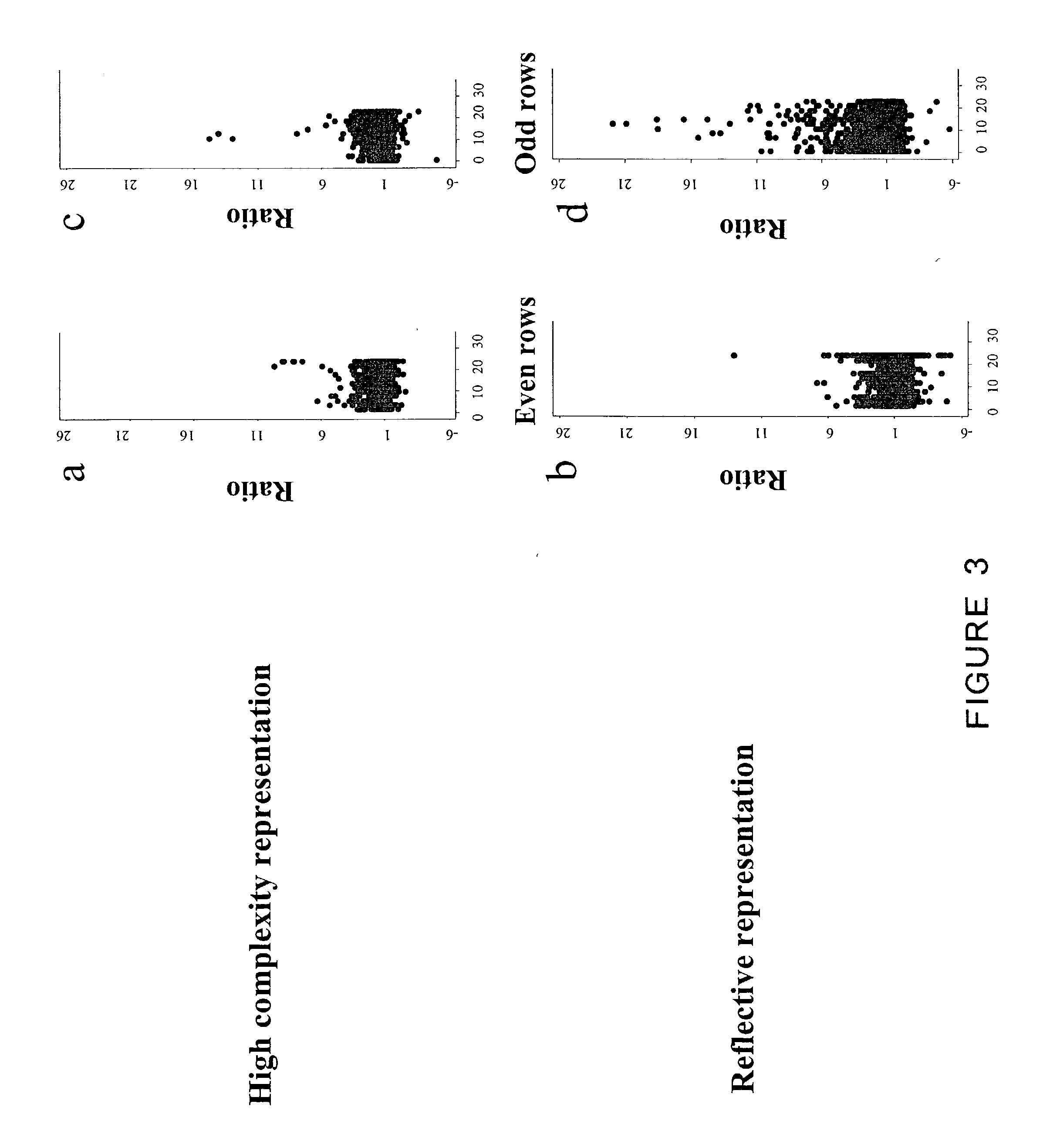Use of reflections of DNA for genetic analysis
a reflection and gene technology, applied in the field of gene analysis, can solve the problems of inefficiency and incomplete one-by-one query method, inability to interpret data obtained, and high difficulty in correlation with disease process, and achieve the effect of improving the accuracy of results and avoiding errors
- Summary
- Abstract
- Description
- Claims
- Application Information
AI Technical Summary
Benefits of technology
Problems solved by technology
Method used
Image
Examples
Embodiment Construction
[0031] The present invention provides for the use of reflections of DNA in genetic analysis, preferably microarray technology. The reflection may be prepared from any sample, including simple and compound representations of DNA. Representations are used to obtain a reproducible sampling of the genome that has reduced complexity.
[0032] The principle of this method is to use the collection of fragments, for example fragments arrayed in a microarray, to isolate the complimentary fragments from a sample for analysis. This creates a sample for hybridization that has a complexity on the order of the array being used for hybridization. By doing this the complexity of the sample can be dropped enormously. This in turn allows for better signal to noise for the probes on the array. This attribute allows the identification of specific fragments from genomes of size and complexity that could not normally be analyzed by conventional methods. The method of the invention can be used to analyze gen...
PUM
| Property | Measurement | Unit |
|---|---|---|
| Fraction | aaaaa | aaaaa |
| Fraction | aaaaa | aaaaa |
| Reflection | aaaaa | aaaaa |
Abstract
Description
Claims
Application Information
 Login to View More
Login to View More - R&D
- Intellectual Property
- Life Sciences
- Materials
- Tech Scout
- Unparalleled Data Quality
- Higher Quality Content
- 60% Fewer Hallucinations
Browse by: Latest US Patents, China's latest patents, Technical Efficacy Thesaurus, Application Domain, Technology Topic, Popular Technical Reports.
© 2025 PatSnap. All rights reserved.Legal|Privacy policy|Modern Slavery Act Transparency Statement|Sitemap|About US| Contact US: help@patsnap.com



